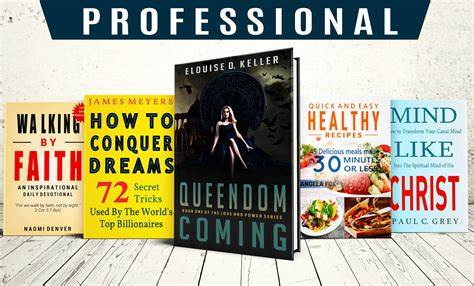Content Menu
● Understanding the Importance of a Book Cover
● Key Elements of Book Cover Design
>> Front Cover
>> Spine
>> Back Cover
● Steps to Create a Custom Book Cover
>> Define Your Concept
>> Gather Inspiration
>> Choose Your Design Tools
>> Set Up Your Canvas
>> Design Your Cover
● Additional Considerations in Book Cover Design
>> Understanding Your Audience
>> Color Psychology
>> Typography Choices
● Review and Feedback Process
● Finalizing Your Design
● Marketing Your Book Cover
● Conclusion
● Related Questions
>> 1. What software can I use to design my book cover?
>> 2. How do I calculate the spine width of my book?
>> 3. What elements should be included on my back cover?
>> 4. How important is color in my book cover design?
>> 5. How can I ensure my book cover stands out?
● Citations:
Creating a custom book cover is an essential step in the publishing process, whether you are self-publishing or preparing a manuscript for traditional publishing. A well-designed cover not only attracts readers but also conveys the essence of your book. This comprehensive guide will walk you through the steps of designing a custom book cover, from conceptualization to final touches.

Understanding the Importance of a Book Cover
The book cover serves as the first impression for potential readers. It is crucial for several reasons:
- Attracts Attention: A visually appealing cover can catch the eye of readers browsing in bookstores or online.
- Conveys Genre and Tone: The design elements should reflect the genre of the book, helping readers understand what to expect.
- Establishes Professionalism: A polished cover suggests that the content within is equally professional.
Key Elements of Book Cover Design
When designing a book cover, there are three main components to consider: the front cover, spine, and back cover.
Front Cover
The front cover is the most visible part and should include:
- Title: The title should be prominent and easy to read.
- Author's Name: This should also be clearly displayed, often positioned below the title.
- Imagery: Choose images or graphics that represent the book's theme or genre.
Spine
The spine is often overlooked but is crucial for physical books:
- Title and Author's Name: These should be readable when the book is on a shelf.
- Design Continuity: Ensure that the spine design complements the front and back covers.
Back Cover
The back cover typically contains:
- Blurb: A brief description of the book that entices readers.
- Author Bio: A short biography that establishes credibility.
- ISBN and Barcode: Necessary for retail sales.
Steps to Create a Custom Book Cover
Define Your Concept
Before diving into design, take time to brainstorm your concept. Consider:
- What emotions do you want to evoke?
- Who is your target audience?
- What makes your book unique?
Understanding your concept will guide your design choices and ensure that every element aligns with your vision.
Gather Inspiration
Look at existing covers in your genre for inspiration. Analyze what works and what doesn't. Create a mood board using platforms like Pinterest to collect ideas on color schemes, typography, and imagery. Pay attention to trends in your genre; for instance, romance novels often feature soft colors and whimsical fonts, while thrillers might utilize darker tones with bold typography.
Choose Your Design Tools
Select software that suits your skill level and needs:
- Canva: User-friendly with templates suitable for beginners.
- Adobe InDesign/Illustrator: Professional tools for advanced users who want complete control over their design.
- Microsoft Word: Basic option for simple designs if you are not familiar with graphic design software.
Set Up Your Canvas
For print covers, set your canvas size based on your final book dimensions. A common size is 17 x 11 inches for a full wrap cover (front, spine, back). Calculate spine width using:
$$
\text{Spine Width} = \frac{\text{Page Count}}{500}
$$
For example, a 250-page book would have a spine width of $$ \frac{250}{500} = 0.5 $$ inches.
Make sure to add bleed areas (typically 0.125 inches) around your design to prevent any white edges from appearing after trimming.
Design Your Cover
Now it's time to start designing:
- Front Cover:
- Use high-quality images or illustrations that resonate with your story.
- Choose typography that reflects your genre (e.g., serif fonts for literary fiction, sans-serif for modern themes). Ensure that it's legible even at smaller sizes.
- Spine:
- Center text vertically and horizontally.
- Ensure legibility with appropriate font size; typically, fonts on spines should be larger than those on other parts but not overwhelming.
- Back Cover:
- Include a compelling blurb that summarizes the plot without giving too much away.
- Maintain design consistency with front cover colors and fonts; this creates a cohesive look across all surfaces of the book.

Additional Considerations in Book Cover Design
Understanding Your Audience
Knowing your target audience is critical in designing an effective book cover. Research demographics such as age group, gender, and reading preferences. For example, young adult fiction often uses vibrant colors and modern fonts to appeal to younger readers, while historical fiction may employ more subdued colors and classic typography to attract an older audience.
Color Psychology
Colors evoke emotions and can significantly influence reader perceptions. Here are some common associations:
- Red: Passion, danger
- Blue: Trust, calmness
- Green: Nature, tranquility
- Yellow: Happiness, optimism
- Black: Sophistication, mystery
Choose colors that align with both your book's theme and the emotional response you wish to elicit from potential readers.
Typography Choices
Typography is more than just picking a font; it involves creating a visual hierarchy that guides readers' eyes through information on the cover. Consider these tips:
- Use contrasting fonts for titles and subtitles to create distinction.
- Limit yourself to two or three font styles to maintain clarity.
- Ensure all text is legible against background images or colors; use drop shadows or outlines if necessary.
Review and Feedback Process
Once you've created your initial design, it's essential to gather feedback from others. Share your design with friends, family, or writing groups to get their impressions. Ask specific questions about clarity, attractiveness, and whether it accurately reflects the content of your book.
Incorporate constructive criticism into your revisions. Sometimes minor adjustments can make significant differences in overall appeal.
Finalizing Your Design
Ensure all elements are aligned properly and check for any typos or errors before finalizing your design. Save your final design in PDF format for printing, ensuring it meets any specific requirements from your publisher or printer (e.g., bleed settings).
Additionally, consider creating digital versions of your cover suitable for eBooks as well as promotional materials like banners or social media posts.
Marketing Your Book Cover
Once you have designed an attractive custom book cover, it's time to leverage it for marketing purposes:
- Social Media Promotions: Share images of your cover on platforms like Instagram or Facebook to generate buzz before launch day.
- Book Trailers: Create short videos featuring your cover along with compelling visuals related to your story.
- Author Website/Blog: Feature your book cover prominently on your website along with links where readers can purchase it.
Conclusion
Designing a custom book cover requires creativity, attention to detail, and an understanding of both design principles and your target audience. By following these steps and tips—defining your concept, gathering inspiration, choosing appropriate tools, setting up correctly, designing effectively—you can create an engaging cover that not only attracts readers but also accurately represents your work.

Related Questions
1. What software can I use to design my book cover?
You can use various software options such as Canva for beginners, Adobe InDesign or Illustrator for professional designs, or even Microsoft Word for simple layouts.
2. How do I calculate the spine width of my book?
To calculate spine width, divide your total page count by 500. For example, a 250-page book has a spine width of $$ \frac{250}{500} = 0.5 $$ inches.
3. What elements should be included on my back cover?
Your back cover should include a captivating blurb about the book, an author bio, ISBN and barcode, and possibly reviews or endorsements if available.
4. How important is color in my book cover design?
Color plays a significant role in setting the mood and tone of your book cover. It should align with the emotions you want to evoke in potential readers while also being visually appealing.
5. How can I ensure my book cover stands out?
To make your book cover stand out, focus on unique imagery, bold typography, effective use of color contrast, and maintaining clarity without overcrowding it with too much text or imagery.
Citations:
[1] https://library.loudoun.gov/Portals/0/Pdf/Quick%20Guide%20to%20Covers.pdf
[2] https://miblart.com/blog/how-to-design-a-book-cover/
[3] https://www.youtube.com/watch?v=f5OwvVmfH4Q
[4] https://authorpreneurpodcast.com/designing-your-own-book-cover/
[5] https://www.ingramspark.com/master-your-book-cover-design
[6] https://www.youtube.com/watch?v=xoPXoTHwq3Q
[7] https://www.linkedin.com/pulse/how-make-custom-book-cover-bookbaby-sebxc
[8] https://blog.reedsy.com/how-to-design-a-book-cover/
[9] https://spines.com/book-cover-design-tips-for-creating-eye-catching-covers/
[10] https://www.blurb.com/blog/how-to-design-book-cover-professional-tips/
































